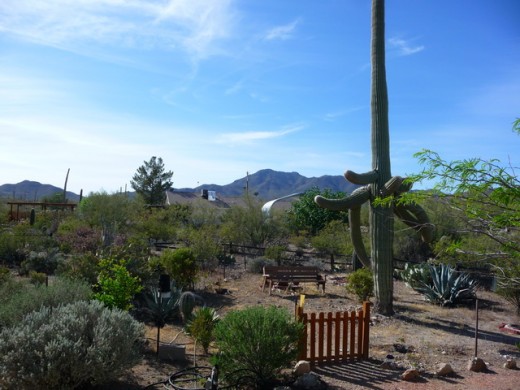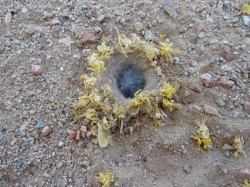“I remove rattlesnakes from my property myself,” a neighbor told us. “In two pieces!”
Recently we purchased a small home on two acres in a rural area near Tucson, Arizona. Because we chose the property for its native vegetation and wildlife that it attracted, we assumed others who live here share our values. For the past seven years, living in our RV on wildlife refuges, we’ve been surrounded by flora and fauna in native habitat that was protected to encourage biodiversity which is a measure of the health of an ecosystem. This neighbor, however, declined our offer to relocate venomous snakes from his property using specialized tools we’ve acquired for that purpose. As with many people, he clearly had no love of rattlesnakes.

“This area is a hotbed of rattlesnakes,” another neighbor assured us. As we had yet to discover one snake on our property, we assumed that perhaps his horses and dogs and assorted other animals scatter feed that collects rodents which in turn attracts snakes. Concern for his animals and his young children prevents him from concern for the fate of a rattlesnake.
[box type=”alert”]Most people who are bitten by snakes are trying to harm or kill the snake.[/box]
While we can certainly understand the determination to protect children, pets, and property, we also understand the benefits and necessity to preserve and respect biodiversity. A habitat overrun with mice may also harbor hantavirus, a disease that is 75% fatal to humans and can be contracted by merely breathing in dust containing mouse droppings. Snakes help maintain the balance in nature and control the rodent population, besides serving as food for other animals.
Different Viewpoint
A different point of view presented itself when we spent a day recently in the town of Rio Rico south of Tucson at the Nature and Heritage Festival volunteering for Buenos Aires National Wildlife Refuge. Here we met and worked with others manning their respective booths with focus and purpose similar to our own, and together we shared our passion and excitement of the natural world.


A teacher at Lourdes Catholic School in Nogales, Teresita Scully, values the wildlife on her property. “We saw a tiger rattlesnake in our yard the other day,” she says matter-of-factly.
Teresita works with her high school students to compost and create an organic garden. They have constructed a water conserving drip system and have started a water project to harvest rainwater for their garden.

“It’s tremendously important to teach the young about ecology,” she says, “and the web of life that’s woven together.” Teresita and her students share their harvest with the poor and needy.
On the other side of the room sat Claudia Pinto from Ravens-Way Wild Journeys. “We so need to raise awareness of the biodiversity of the Sky Islands,” she says. The Sky Islands are a series of forested ranges separated by vast expanses of desert and grassland plains in southeastern Arizona, southwestern New Mexico, and northwestern Mexico. This region is globally important because of its rich diversity of species and habitats and as the last American stronghold of the Mexican wolf and jaguar.

“It’s through education and awareness that people will understand the importance of protecting and preserving this unique biodiversity,” Claudia continued. “We all need to understand that this is what we have here so that we can each do something about it whether we have a big or a small property.”
Nearby, Tony Sedgwick promoted his Santa Fe Ranch in Nogales. This ranch is devoted to research and education, as well as ecology and conservation. Together with the University of Arizona and numerous area schools, they carry out tree planting, gardening and animal husbandry projects. They are also environmental partners with the Tucson Audubon Society, The Friends of the Santa Cruz River, and The Natural Resource Conservation District and have accepted the challenge to protect native southern Arizona grassland, while restoring and protecting the flora and fauna of the Santa Cruz River.


Tony invited us to bring our snakes to the Santa Fe Ranch next season to present programs as part of their education efforts. We were delighted to accept!
Occupying the remaining space near us at the Nature and Heritage Festival was Tucson Audubon Society. This group promotes conservation, education, and recreation, offering ways to protect and enhance the wildlife of southern Arizona for future generations.
Sharing the Passion
Surrounded by energetic, caring organizations and the people who staff them, we felt invigorated and stimulated in a realm of those who, like us, wish to share their passion for the natural world.

Regardless of sentiments that may be held about them, rattlesnakes are a part of the natural habitat. Killing them or relocating them to accommodate residential fears merely opens the habitat for other snakes to replace the vacancy. Other options include a snake-bite vaccine for dogs to lessen the severity of the bite or training dogs to stay away from snakes by use of an electronic collar. Children must be taught to be observant and never pick up a snake or agitate it by throwing objects at it.
Let’s hope we can protect biodiversity as well as children, pets, and property through understanding and education.

